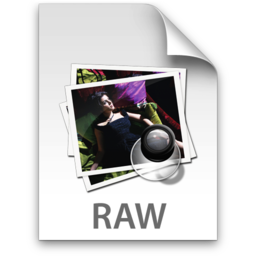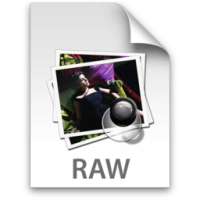This is the second post in my two post series on discussing the JPEG and RAW file formats. My previous post discussed the advantages and disadvantages of JPEG files, and this post will discuss the same topic for RAW files.
Unlike JPEG files, however, there are many drawbacks to using RAW files, and most who use digital cameras probably won’t want to use this format. The more experienced photographers, on the other hand, may love what RAW has to offer.

Proprietary format.
Let’s start the discussion by talking about the fact that there isn’t a standard RAW file format. Each camera manufacturer create their own RAW format, so there isn’t one standard format. In fact, a camera manufacturer may produce a different RAW format for each camera they produce – so even a manufacturer won’t use a single format standard among their products.
This causes headaches for the consumer because if they upgrade their camera, the software they were using to edit their previous RAW photos may not be updated enough to edit their new camera’s RAW format.
Larger file sizes than JPEG files.
A RAW file is much larger than an equivalent JPEG file – I’m talking about 2 to 6 times larger. This has a drawback in that a digital camera can’t take as many pictures per second with a RAW file compared to a JPEG due to the fact that it must save more data. The benefit of a larger file size is that there is a lot more data within a RAW file than a JPEG.
With the size and price of memory cards, storage space for larger RAW files shouldn’t be a big issue.
Need specialized software to edit a RAW file.
Since RAW files have no common standard, not all photo editors are capable of editing RAW files. With each new RAW format created by a camera manufacturer, an update to the photo editor may be needed.
The good news is that cameras that can shoot the RAW format usually include software that can edit the files. While the included software isn’t as robust at Photoshop, or another large photo editor, the included software does do a good job. Software packages such as Photoshop tend to support more RAW formats through various updates.
Can’t print RAW files.
JPEG files are supported by any print shop in the world, but none of those printers support RAW files. You will first need to convert the RAW files to a support file format, such as JPEG, before the photo can be printed.
Minimalist settings applied.
The one benefit that a RAW file has over a JPEG file is that the settings specified in the camera aren’t applied to the image. Why is this a benefit? If you had the wrong color balance set in the camera when you take the picture, you can easily change it on your computer with a RAW file very easy without any degradation in quality. For JPEGs, you would need to remove the color cast through much editing and possible degradation.
Also, if you shoot black and white, the JPEG files will not contain any RGB color information. For RAW files, all that color information is retained in the RAW image, so you can always print that image in color or black and white. The black and white setting in your camera is applied to the JPEG file, not the RAW file.
More overhead for editing.
As discussed in my previous post, a JPEG file contains 8-bits per color channel of data for each pixel. RAW files can contain 10-, 12-, or 14-bits of data per channel of color data. This provides an enormous amount of overhead for editing. This overhead helps to prevent any color banding in the image.
Another benefit is with regards to sharpening. With JPEGs, sharpening is done in-camera, which means that it becomes a one-size-fits-all method of sharpening. Since RAW files haven’t been sharpened in the camera, you can then sharpen the image in your photo editor any way you like. This can also help reduce the noise that can occur because of unwanted sharpening.
Recover some data.
If you have a small amount of blown highlights in your image, you can’t recover them very easily with a JPEG file. With RAW files, however, there is still a chance that those highlights can be recovered because of the amount of data that is stored in the file. While you can’t work miracles with some really bad images, for minor issues, you may be able to save your work.
While the above points do provide advantages and disadvantages for using RAW files, not all digital cameras support this format so you may not have a choice. The RAW file format is not for everyone, but if you do like to edit photos and have a camera that can shoot RAW files, then you may want to give it a try.
In addition, some cameras have the ability to shoot both RAW and JPEG files with each picture that is taken. This provides the best of both worlds, but it does use up more storage space on your memory card.
Are there any other points that can be added to the above list? Which format do you prefer to use, JPEG, RAW, or both?
